Immunization Costing
The Zero-Dose Learning Hub (ZDLH) Costing Toolkit is the central resource for estimating the costs of interventions to reach zero-dose (ZD) and under-immunized (UI) children. This page features the toolkit alongside companion briefs, case studies, and blogs that highlight its methods and applications, giving country teams and partners practical evidence to strengthen planning, budgeting, and advocacy.
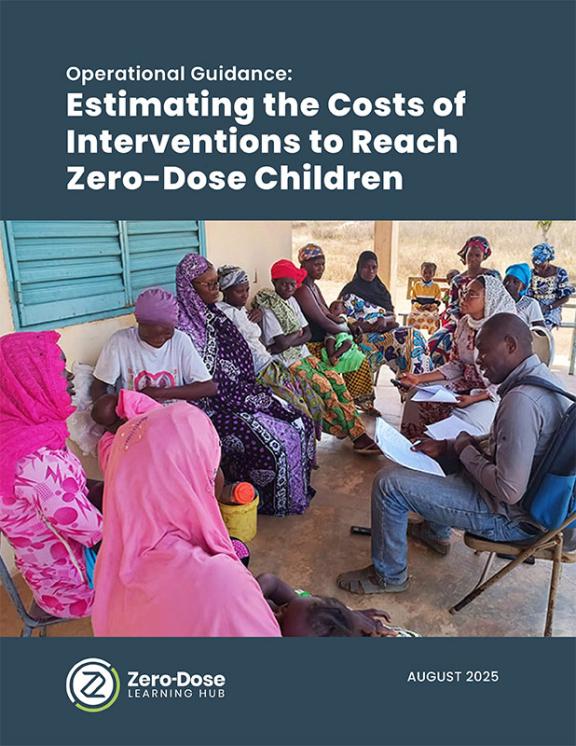
Operational Guidance: Estimating the Costs of Interventions to Reach Zero-Dose Children
The practical toolkit equips teams with clear methods for costing interventions targeting ZD and UI children in low- and middle-income countries. You do not need to be a health economist to use this toolkit. It is designed for program managers, M&E specialists, and implementers with basic project management, data collection, and spreadsheet skills. The toolkit provides step-by-step guidance on using robust approaches, especially ingredients (micro) costing, to calculate and report both financial and economic costs, helping practitioners capture the true value of resources used, including staff time, donated goods, and volunteer labor. By focusing on incremental and total costs, the toolkit supports better budgeting, resource optimization, and planning for scaling effective interventions, while aligning with WHO’s global standards on vaccine delivery costing to ensure consistency and comparability across studies.
Resource Briefs and Case Studies
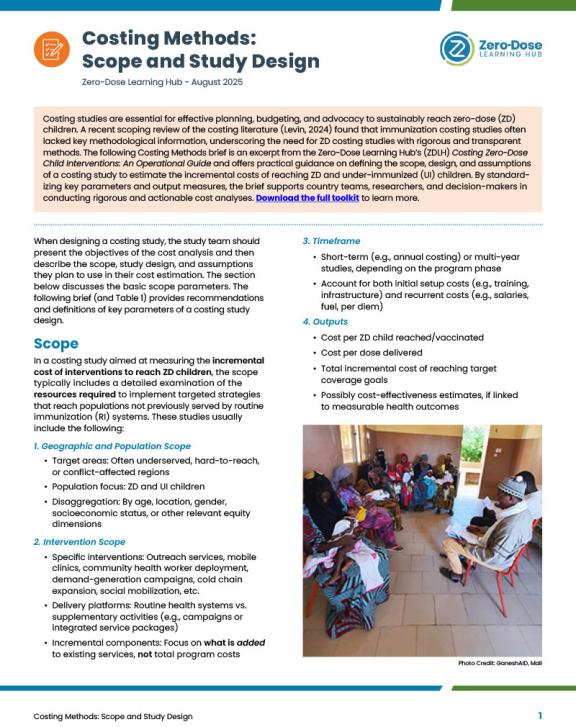
Costing Methods: Scope and Study Design
Costing studies are essential for effective planning, budgeting, and advocacy to reach zero-dose (ZD) children sustainably. A recent scoping review of the costing literature (Levin, 2024) found that immunization costing studies often lacked key methodological information, underscoring the need for ZD costing studies with rigorous and transparent methods. This brief is an excerpt from the ZDLH’s Costing Zero-Dose Child Interventions: An Operational Guide and offers practical guidance on defining the scope, design, and assumptions of a costing study to estimate the incremental costs of reaching ZD and UI children.
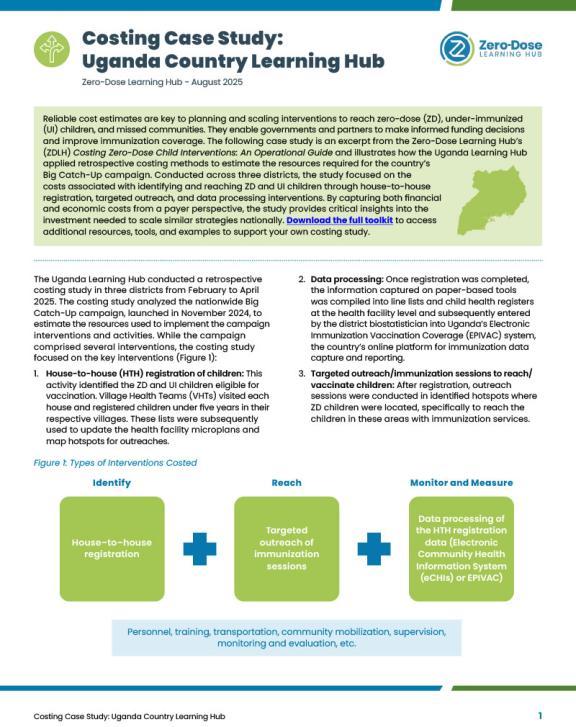
Costing Case Study: Uganda Learning Hub
Reliable cost estimates are key to planning and scaling interventions to reach ZD and UI children and missed communities. They enable governments and partners to make informed funding decisions and improve immunization coverage. This case study is an excerpt from the ZDLH’s Costing Zero-Dose Child Interventions: An Operational Guide and illustrates how the Uganda Learning Hub applied retrospective costing methods to estimate the resources required for the country’s Big Catch-Up campaign.
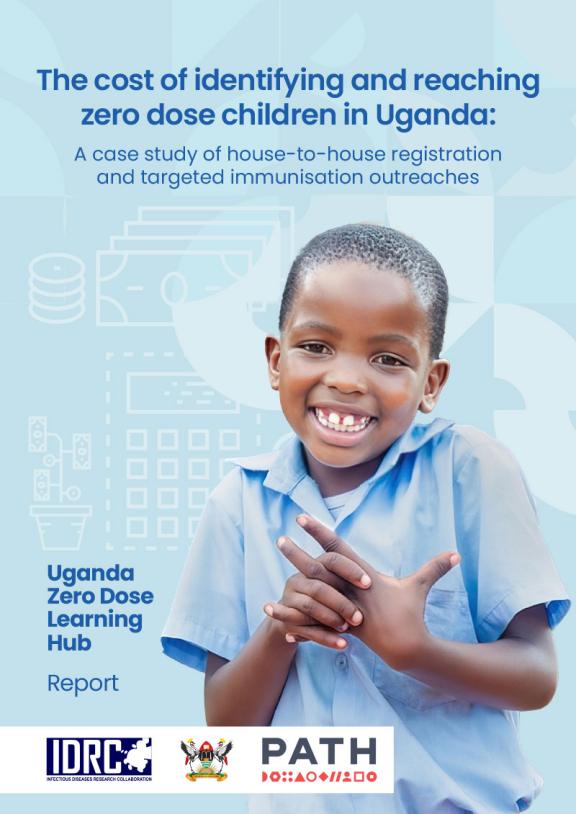
This report from the Uganda Zero-Dose Learning Hub presents findings from a costing study conducted during the 2024 Big Catch-Up campaign. It estimates the incremental costs of identifying and reaching zero-dose and under-immunized children through house-to-house registration and targeted outreaches in three high-burden districts. Results highlight unit costs per child identified and vaccinated, cost drivers, and district variations, offering evidence to guide future planning, budgeting, and sustainability of immunization strategies in resource-constrained settings.
Zero-Dose Costing Blog Series
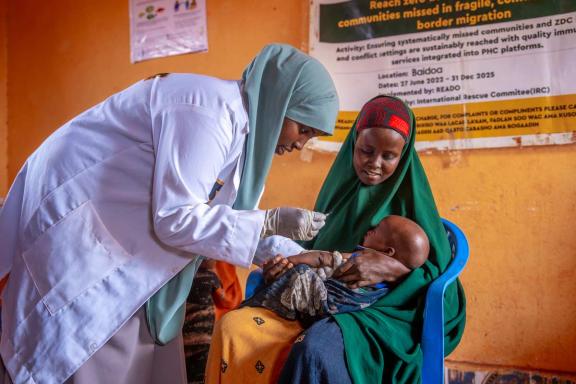
What Does It Cost to Reach Every Child? Why Costing Zero-Dose Immunization Interventions Matters
This blog outlines why reliable costing data is critical for planning interventions that reach ZD and UI children, an area where evidence is often lacking. It introduces the ZDLH Costing Toolkit, which offers step-by-step guidance and practical tools to help country teams generate cost data for stronger planning, budgeting, and advocacy.
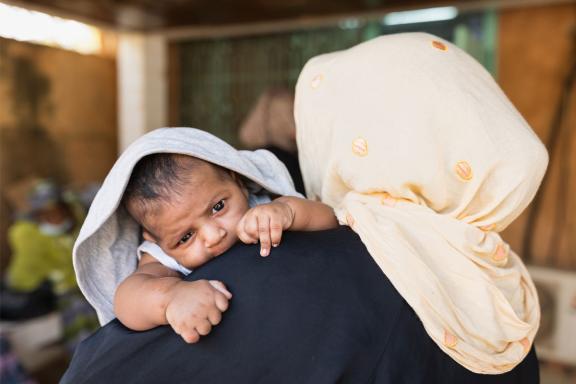
What Will it Take? A Practical Guide to Costing Zero-Dose Immunization Strategies
This blog provides an overview of how to apply the ZDLH Costing Toolkit to generate reliable financial and economic data on zero-dose strategies using a practical ingredients costing approach. The toolkit offers program implementers step-by-step guidance and templates to determine the true operational expenses of reaching the last mile, strengthening planning and advocacy efforts.